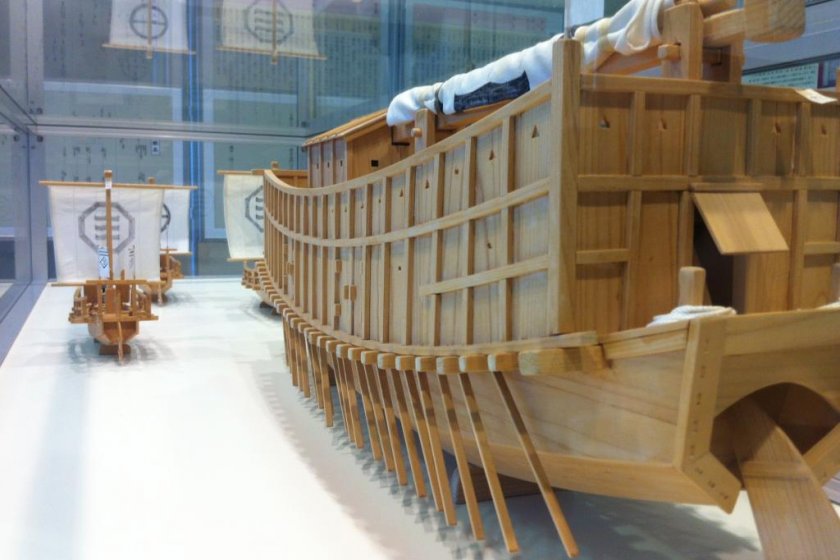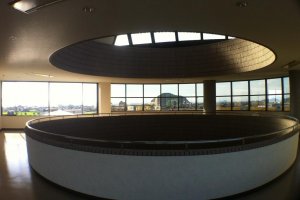Hojo is a sprawling agricultural area, forming the northern part of Matsuyama city. Today it’s a place of rice paddies and farmhouses. But in the distant past, it was a different sort of place. During the Kamakura and Muromachi periods (1192 - 1575), groups of seaborne militias called Iyo Suigun appeared and came to dominate the vital supply routes in the Inland Sea between the western provinces and Kyoto, then the capital of Japan. They accumulated authority for policing the trade routes, taxing the traders and Samurai warriors who tried to pass through the channels. These militias were based in Ehime, formerly known as Iyo, between Matsuyama and Imabari. Some of them were based in Hojo, in an area called Kazahaya or ‘fast wind’, for the stiff breezes that blow onto the land from between islands in the Inland Sea. These one-time pirates-become-coast guards developed their own culture, which was celebrated widely in the area until recently.
Even before the time of the Iyo Suigun, Hojo was an important area for civilization in Ehime, although perhaps not in the lively sense of a maritime culture—it was an expansive graveyard for an early Japanese aristocracy. The area is dotted with tumuli that are known as kofun in Japanese. Today they’re hard to find, but some of them are marked on the map and you can even go inside them. They’re damp, dark, and batty.
The history of the Iyo Suigun and the kofun is presented in the Hojo Hometown Pavilion, a rather strange facility consisting of a museum, art gallery, meeting hall and viewing platform. This isn’t a major tourist destination by any means, but it’s free to enter and the museum will be attractive to anyone with an interest in archaeology. The art gallery has some agreeable but unremarkable sumi-e ink paintings, and some quite awful oil paintings which are worth seeing if you want to learn how Japanese painters have typically approached the medium. When I lasted visited, there was a temporary exhibition of Spanish art including a low-grade Miro.
The top floor of the Pavilion affords a spectacular view of the Seto Inland Sea, former home of pirates, and of Mt. Ishizuchi, whose foothills are dotted with tumuli.
The Pavilion is also the home of the Furusato Kazahaya Traditional Arts Festival, held on the last Saturday of July, from 1:30 pm, when so-called ‘preservation societies’ present the vernacular arts of the area.
The Pavilion stands in a pleasant park with a good children’s playground.
Name in Japanese
- 北条ふるさと館 Hōjō Furusato-Kan Hojo Hometown Pavilion


































